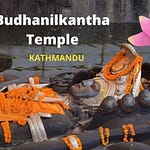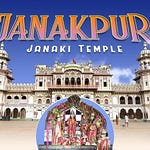Bhaktapur Durbar Square, located in the ancient city of Bhaktapur (also known as Bhadgaon), stands as one of the most spiritually and architecturally significant royal palace squares in the Kathmandu Valley of Nepal. Unlike a mere historical site, it is a living temple town, steeped in devotion, mythology, and the vibrant traditions of Hindu Dharma.
Once the royal seat of the Malla kings, Bhaktapur Durbar Square is a breathtaking example of Newar Hindu culture and serves as a testament to the power of dharma, architecture, and artistry coexisting harmoniously in the life of a civilization.
🏰 Historical Background: The Rise of a Devotional City
📜 The Malla Dynasty and Sacred Sovereignty
The city of Bhaktapur rose to prominence during the Malla period, especially between the 14th and 18th centuries. The Malla kings were deeply devout Hindus, and their rule marked a golden age of religious and artistic prosperity. Bhaktapur served as a spiritual and administrative capital, where religion was not separated from governance—it was its very foundation.
Every temple, statue, and courtyard was constructed with spiritual intention—to glorify the deities, uphold dharma, and preserve Sanatana traditions. King Bhupatindra Malla, in particular, played a crucial role in enhancing Bhaktapur’s grandeur, leaving behind legacies such as the 55-Window Palace and Nyatapola Temple.
🛕 Temples and Religious Structures: Sacred Pillars of Bhaktapur Durbar Square
Each structure in Bhaktapur Durbar Square is either directly linked to Hindu deities or aligned with sacred cosmological beliefs. The square is not just architecture—it is Hindu cosmology carved in stone.
🪷 1. Nyatapola Temple (Five-tiered Pagoda of Siddhi Lakshmi)
Deity: Goddess Siddhi Lakshmi (a tantric form of Durga)
Symbolism: The five levels represent Pancha Mahabhuta—earth, water, fire, air, and space.
Significance: Built in 1702, this temple reflects Shakti worship and tantric traditions that are central to Hindu practices in Nepal.
🔱 2. Bhairabnath Temple
Deity: Bhairava (a fierce form of Lord Shiva)
Role in Hinduism: Bhairava is the guardian of time and dharma. He destroys ignorance and clears obstacles to spiritual liberation.
The temple is active during tantric rituals and Bhairab Jatras, which emphasize destruction of ego and illusion.
🌺 3. Vatsala Devi Temple
Deity: Vatsala Devi (a manifestation of the Goddess Lakshmi)
Built in stone, this temple symbolizes prosperity, divine beauty, and wealth—all offered back to the Supreme.
🔔 4. Taleju Bell (Bell of the Goddess)
Taleju is the royal deity of the Malla kings, believed to be an incarnation of Durga.
The bell is rung during daily rituals to ward off evil spirits and signal the beginning of spiritual ceremonies.
🌟 5. Golden Gate (Lu Dhowka)
Considered one of the most exquisite gates in South Asia, it leads into the sacred Taleju complex.
Decorated with the images of Garuda (Vishnu’s vahana) and Nagas (cosmic serpents), it reflects the protective forces of Hindu Dharma.
🕉️ Religious Significance in Hindu Dharma
Bhaktapur Durbar Square is not just a cultural site—it is a living temple ecosystem governed by principles of Hindu Dharma:
Dharma (Duty): Temples and rituals uphold the responsibilities of kings, priests, and citizens.
Bhakti (Devotion): Daily pujas, processions, and festivals offer direct access to divine connection.
Shakti Worship: The entire city resonates with Shakta traditions, especially during Navaratri, Bisket Jatra, and Gai Jatra.
Tantric Practices: Many temples like Bhairabnath and Nyatapola are designed based on tantric mandalas, reflecting esoteric spiritual practices of the Himalayas.
The square is also a manifestation of the Mandala, a symbolic spiritual diagram representing the universe in Hindu cosmology. Its layout integrates sacred geometry, Vastu principles, and astrological alignments.
📿 Major Hindu Festivals Celebrated in the Square
🚩 Bisket Jatra (Nepali New Year)
Chariot procession of Bhairab and Bhadrakali, involving tantric rituals and community celebrations.
Represents the cosmic battle between dharma and adharma, divine and demonic energies.
✨ Dashain & Tihar
Worship of Durga and Lakshmi in their respective temples.
Devotees offer animal sacrifices at Bhairabnath and Taleju temples during Dashain.
🐄 Gai Jatra
Festival of remembrance for departed souls, where the cow symbolizes Yama’s escort in Hindu afterlife beliefs.
🧭 Visiting Bhaktapur Durbar Square: Travel Guide
🗺️ Location
Bhaktapur City, 13 km east of Kathmandu, Nepal.
📌 Entry Fee
For foreign nationals: Approx. NPR 1500 (used for restoration and maintenance)
No fee for Nepalese citizens
🕒 Best Time to Visit
October to March: Clear skies, cool weather, and peak festival season.
Morning hours offer tranquil experiences; evenings bring the city to life.
📸 Photography
Allowed but respect temple sanctity during rituals.
Drone photography may require permits.
🏞️ Nearby Temples and Attractions
🛕 Dattatreya Square
Home to the Dattatreya Temple, dedicated to the Trimurti (Brahma, Vishnu, and Shiva).
Surrounded by ancient woodcarving museums and traditional homes.
🏺 Pottery Square
A historic artisan quarter where you can watch clay being turned into religious lamps and temple pots—a legacy of Karma Yoga in action.
🛤️ Siddha Pokhari
An ancient water tank used for ritual ablutions and religious ceremonies.
Symbolic of purity and the cleansing of karma.
🛕 Bhaktapur and the Eternal Dharma
Bhaktapur is not just a city—it is a spiritual consciousness that breathes through its bricks and bells. In the rhythm of its rituals and the silence of its temples, it echoes the eternal truths of Sanatana Dharma.
Here, gods are not confined to shrines—they walk the streets during Jatras. Kings were not just rulers—they were custodians of dharma. And temples were not only architectural marvels—they were cosmic diagrams where the divine and the mortal meet.
🧘♀️ A Pilgrimage Beyond Time
To walk through Bhaktapur Durbar Square is to traverse a sacred landscape that has remained untouched by the noise of modernity. It is a city where devotion, design, and dharma still shape daily life. For any devotee of Hindu Dharma, a visit here is more than tourism—it is a pilgrimage to a realm where the material world meets the metaphysical.
In Bhaktapur, you don’t just observe the divine—you live it.








